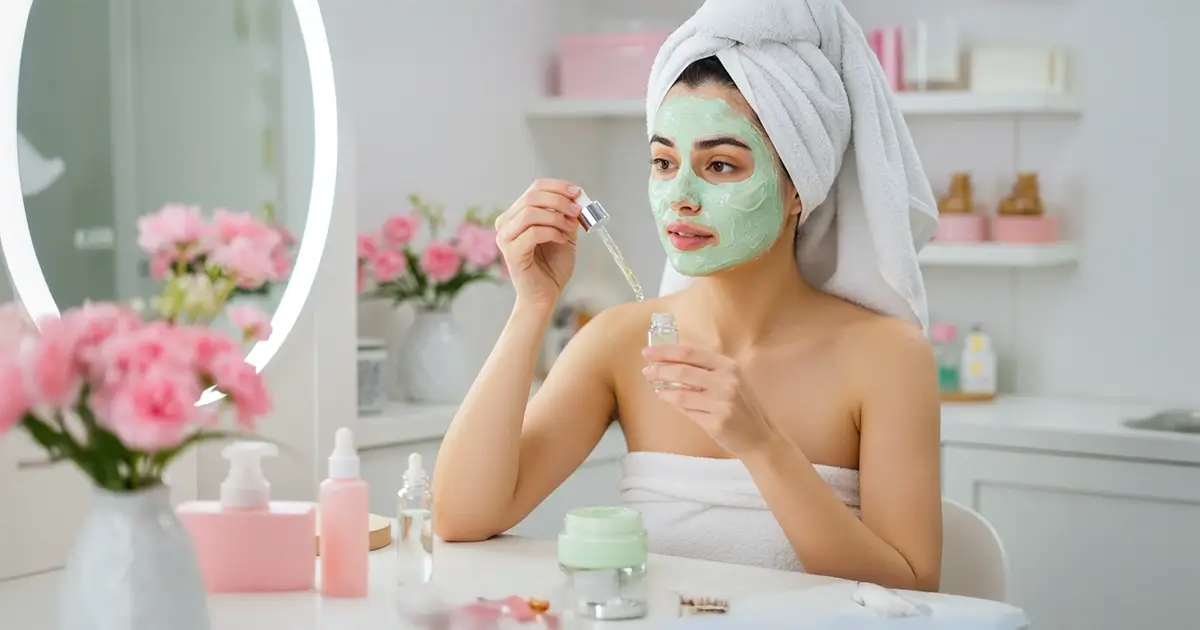You are about to learn how to strip skincare back to the three pillars that matter, then tweak them so every face feels comfortable and protected. Think of it as a quick-start manual for healthy skin, wrapped in friendly advice and finished with an 11-minute read note.
Why Simplicity Wins at the Beginning
Standing in front of a shelf packed with lotions can feel like scrolling endless menus while hungry, choice paralysis sets in fast. A recent consumer survey showed that most beginners abandon complicated routines within four weeks, yet those who start with just three products keep going for six months. Beginning small is the proven way to gain consistency, and consistency is what transforms skin health.
Your outermost layer, the stratum corneum, works like a brick wall where lipids act as mortar, so overloading it with strong actives too soon chips at that mortar and lets irritation sneak in. Dermatologists at the American Academy of Dermatology stress that a gentle routine allows the barrier to stay intact, which means fewer flare-ups and a brighter, calmer complexion over time.
I like to joke that my skin is similar to a toddler at a buffet, give it everything at once and it will throw a tantrum, hand it a small balanced plate and it behaves beautifully.
The Core Three Steps
1. Gentle Cleanse
A wash should remove grime and sunscreen without leaving skin squeaky, because the squeak means you have stripped away essential lipids. A Harvard Health piece on daily care found that balanced cleansers at pH 5.5 reduce redness in as little as two weeks by respecting the acid mantle, read it here if you enjoy nerdy dives: Harvard three-step routine.
Use lukewarm water, massage the cleanser for about 60 seconds, then rinse and gently pat dry with a fresh towel, rubbing is the quickest highway to micro-tears. If you wear heavy makeup, consider a bland micellar water first instead of scrubbing longer, your future self will be glad.
2. Moisturise Intelligently
A moisturiser's main jobs are attracting water with humectants such as glycerin, sealing that water in with occlusives like petrolatum, and smoothing with emollients such as squalane. The Mayo Clinic treatment page for dry skin highlights this three-way combo as the fastest route to barrier repair, especially in dry climates or air-conditioned offices.
Patch-test new creams behind the ear for three nights, if no stinging or bumps appear, you are clear to slather cheeks. Apply while skin is slightly damp, that tiny tweak increases hydration by up to ten per cent because water is pulled deeper before evaporation can start.
3. Sun Protection Daily
Ultraviolet rays bounce through clouds, windows, and good intentions, so sunscreen is non-negotiable even when you work indoors. Choose broad-spectrum SPF 30 or higher, apply two generous finger lengths for the face and neck, then reapply every two hours if outdoors.
If you dislike heavy textures, look for modern mineral-chemical hybrids that finish weightless. Slip, slop, slap still applies, yet the formulas no longer feel like thick paint, which means you will actually use them and not let the tube expire in a drawer.
Adapting the Routine to Skin Type and Environment
Dry or Mature Skin
Dry complexions crave ceramides, cholesterol, and fatty acids, ingredients that mimic the skin's natural mortar and fill hairline cracks. Adding a drop of lightweight oil to your night cream in winter helps lock moisture under the duvet of an emollient layer.
Limit showers to under ten minutes, keep water warm rather than hot, and follow with a body lotion while the bathroom is still steamy. These tweaks reduce trans-epidermal water loss, which spikes in centrally heated rooms.
Oily or Combination Skin
Your sebaceous glands love overachieving, yet stripping them with harsh foaming cleansers only makes them double production out of panic. Instead, use a gentle gel with zinc PCA, then balance shine with a light lotion containing niacinamide, which research shows can lower sebum output by up to 27 per cent after twelve weeks.
At night, spot-treat congested areas with a 2 per cent salicylic acid serum, but keep it off the cheeks if they feel tight. Targeted application lets you tackle blackheads without sacrificing glow. For more detail on tailoring products, hop over to our skin type guide.
Sensitive or Reactive Skin
If your face flushes quicker than someone hearing their school nickname, fragrance and essential oils are the first ingredients to dodge. Introduce new products one at a time, with a full two-week gap before adding another, so you can spot trouble instantly.
Look for labels that shout "minimal ingredients" rather than "for sensitive skin" because marketing claims are not regulated, the ingredient list tells the truth. Keep a notebook of any redness or itching, patterns emerge fast and save future headaches.
Common Mistakes and How to Dodge Them
Over-exfoliating tops every dermatologist's warning list, two chemical exfoliation sessions per week are plenty for beginners, and physical scrubs with large grains are better left for elbows. If your cheeks feel sandpapered, pause exfoliation for seven days and rebuild moisture first.
Product hopping is another enthusiasm trap, skin needs at least one full cell-turnover cycle, around twenty-eight days, to show results. Switching sooner denies you the chance to know whether a formula works or fails.
The last snag is sunscreen amnesia. People apply in the morning then forget reapplication at lunch, yet studies show that SPF protection dips below half its rated value after two hours of normal wear. Pop a travel-size tube beside your phone charger as a reminder, that simple trick helps you remember daily.
FAQ
How long does skin need to adjust to a new routine?
Expect mild changes in two weeks, real shifts in tone and texture show up around the four- to eight-week mark because that is how long fresh cells take to surface.
Can I skip moisturiser if I am oily?
No, dehydrated yet oily skin is common, use a gel-cream with lightweight humectants so you hydrate without added shine.
Do I really need sunscreen indoors?
Yes, UVA rays penetrate glass, so protection remains essential even while working at a window-side desk.
What is the ideal age to start a routine?
Teens benefit from cleanser, moisturiser, and SPF, yet it is never too late, adults beginning at thirty or sixty still see measurable improvements within months.
How do I know if a product is too harsh?
Persistent stinging, flaking, or redness that lasts beyond five minutes signals over-irritation, discontinue use and focus on barrier repair before trying a gentler alternative.
Conclusion
A pared-back routine of cleansing, moisturising, and daily sun protection lays the groundwork for resilient, comfortable skin, and gentle tweaks for skin type boost results without overwhelm. Pick formulas that respect your barrier, track reactions carefully, and give the process time.
I would love to hear which step you master first, so drop a comment below and share your progress. See you in the next post - until then, take good care of your skin!


Comments (0)
No comments yet - be the first to share your thoughts!
Leave a Reply
Your email address will not be published. Required fields are marked *